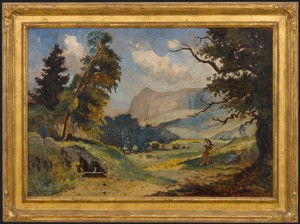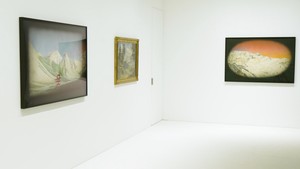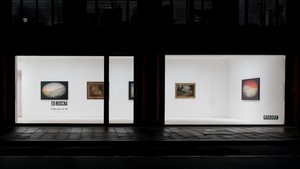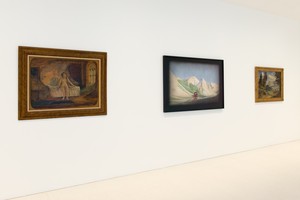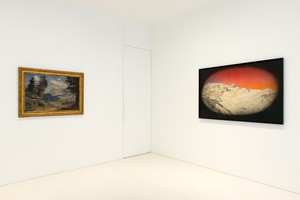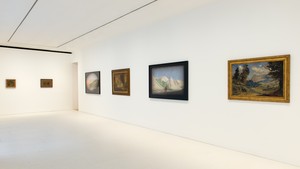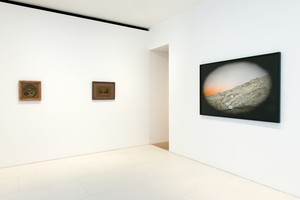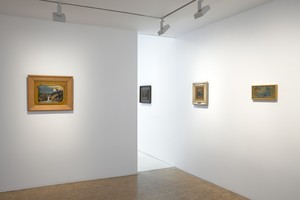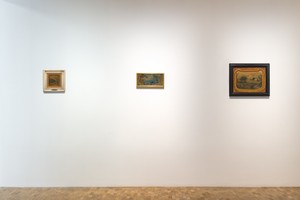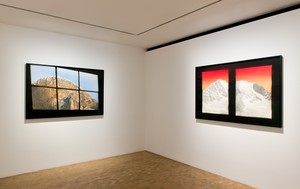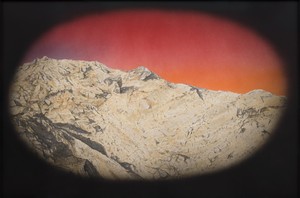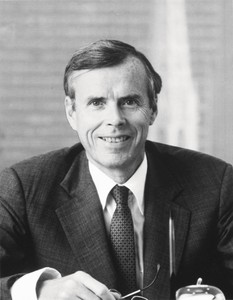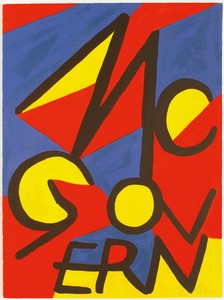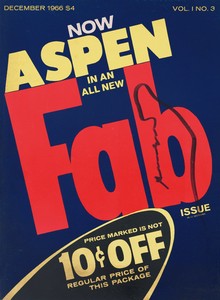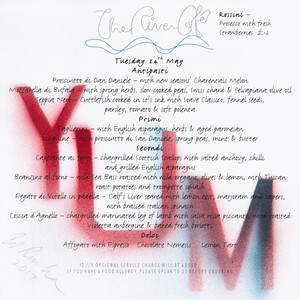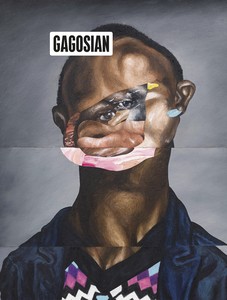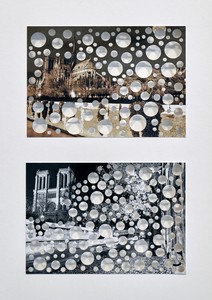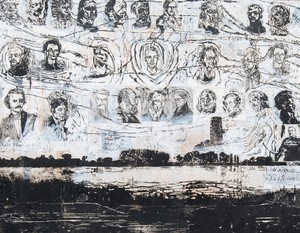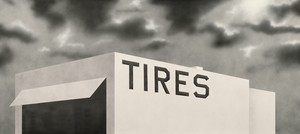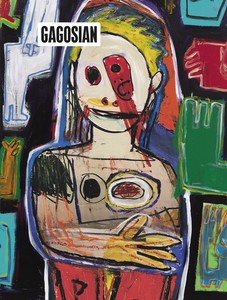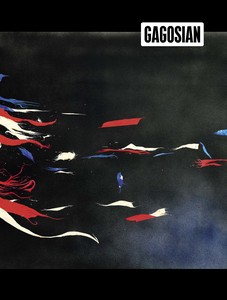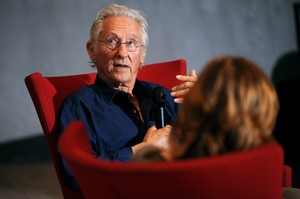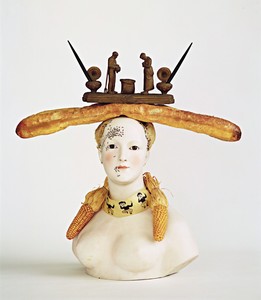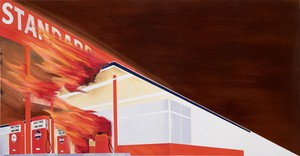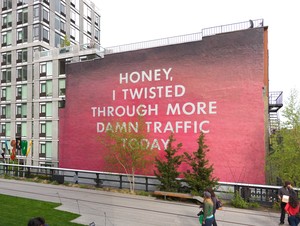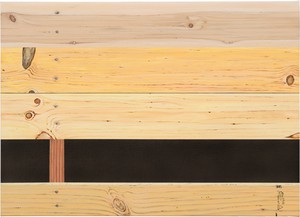The important mission of the artist is to portray scenes which the layman neglects to see in nature; to show beauties which the public never think of beholding; and to imbue his paintings with a thought that is not commonplace. In short, he must uplift the spectator’s mind to higher planes.
—Louis Michel Eilshemius
It’s not to create a picture frame, but to create an idea, to focus on a trapped vision. . . .
—Ed Ruscha
Gagosian is pleased to present Ed Ruscha: Eilshemius & Me, an exhibition of works by Ed Ruscha and Louis Michel Eilshemius (1864–1941).
In 2017, Ruscha began Spied Upon Scene, a series depicting majestic mountainscapes that resemble the idyllic ranges of travel books, postcards, adventure movies, or the Paramount Pictures logo. The series descends from his earlier Mountain Paintings, in which inscrutable phrases, laid over the mountain images, become a wry and physical presence in the landscape. The mountains of Spied Upon Scene, however, are partially restricted from view, visible only through oval-shaped lenses or window grids. Like the Mountain Paintings, they seem to refer to the nineteenth-century tradition of the American Sublime; in fact, their lineage includes an obscure American painter from the turn of the century, Louis Michel Eilshemius, whose use of painted frames became an influence on Ruscha’s own approach.
